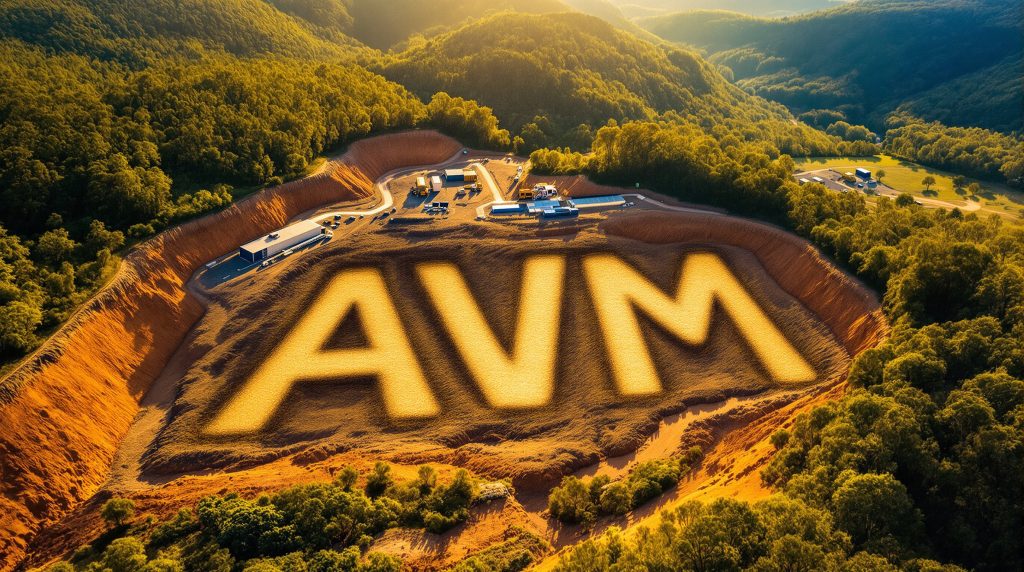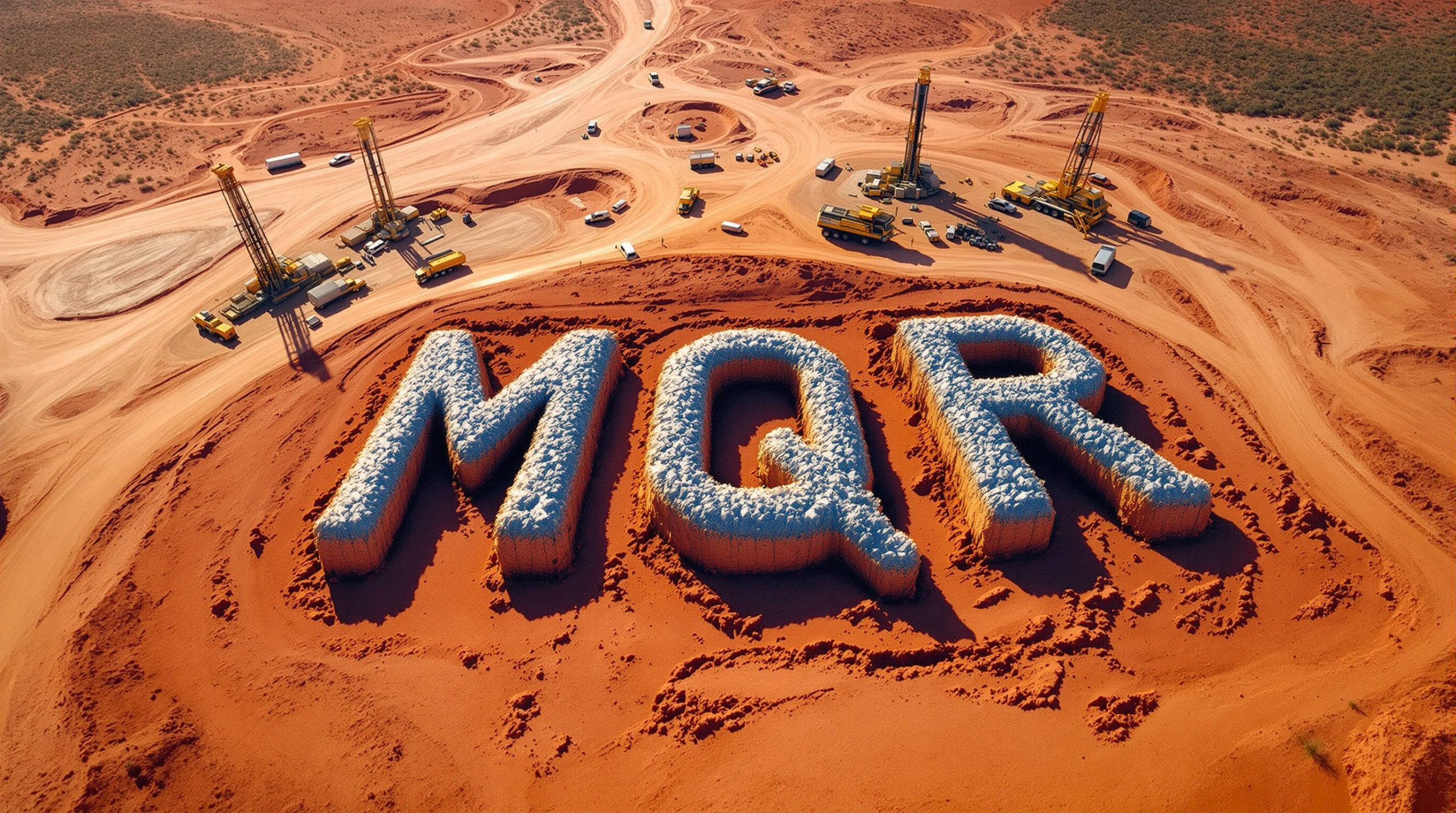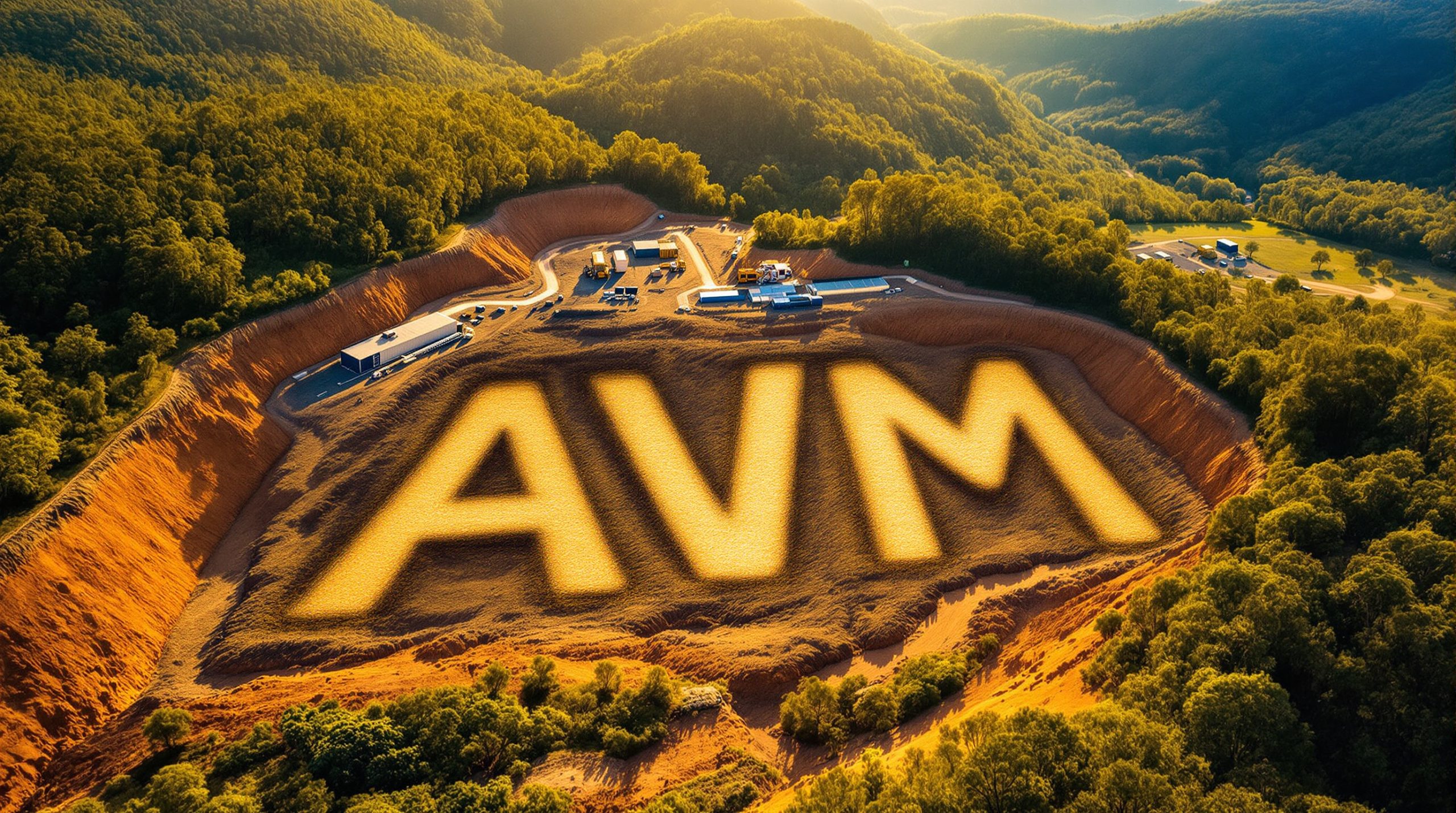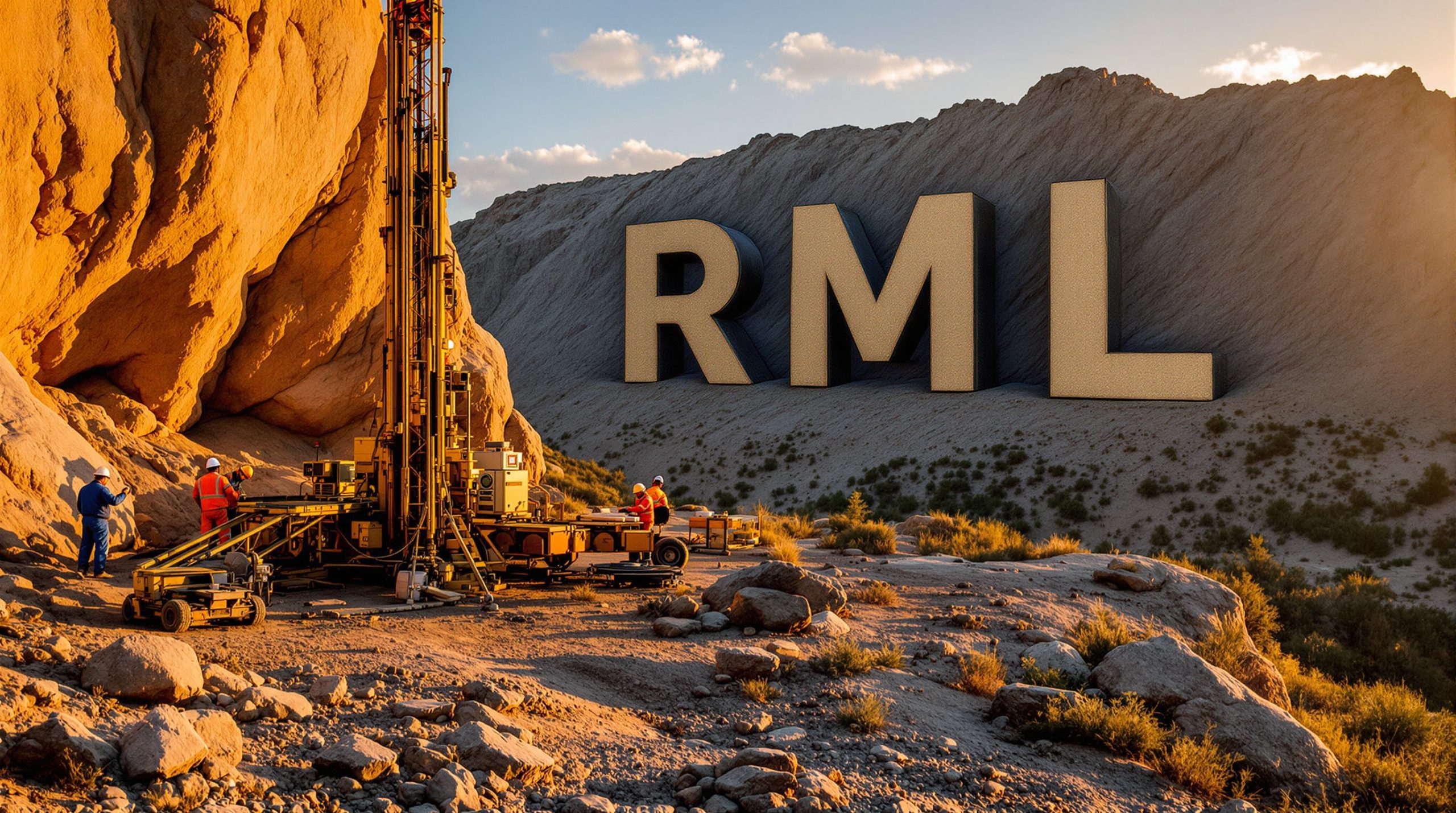High-Grade Gold Discoveries Boost Advance Metals' Myrtleford Project
Advance Metals has released significant new assay results that substantially upgrade the high-grade gold zone at its Happy Valley Prospect, part of the Myrtleford Project in northeastern Victoria's Goldfields. Recent screen fire assay re-analysis has considerably enhanced the project's already impressive gold grades, further confirming the potential of this emerging Australian gold discovery.
Screen Fire Assays Dramatically Upgrade Previous Gold Results
Re-analysis using screen fire assay methodology has delivered substantial improvements to previously reported high-grade gold intersections. This superior technique, which utilises a larger sample size (approximately 1kg) and separately analyses coarse and fine fractions, is particularly effective for accurately measuring coarse, "nuggetty" gold typical of the Victorian Goldfields.
The most significant upgrades include:
-
AMD001: 8.2 metres at 28.8g/t Au (up 29% from 22.4g/t Au)
- Including 3.4 metres at 68.2g/t Au (up 29% from 52.7g/t Au)
-
AMD003: 7.5 metres at 55.0g/t Au (up 15% from 47.9g/t Au)
- Including 1.3 metres at 305.8g/t Au (up 13% from 271.6g/t Au)
These exceptional grades further enhance the ultra-high-grade zone identified in the central portion of the Happy Valley system. The presence of visible gold in many of the core samples supports these impressive assay results.
New High-Grade Gold Zones Found in Peripheral Drilling
In addition to the upgraded results, Advance Metals has reported new high-grade gold intervals from shallow peripheral drilling in the upper portion of the Happy Valley system:
-
AMD010: 0.2 metres at 14.3g/t Au and 1.4 metres at 7.6g/t Au
- Including 0.6 metres at 16.9g/t Au
-
AMD012: 0.9 metres at 25.1g/t Au
These new results expand the known mineralisation and demonstrate the potential for additional high-grade zones within the broader Happy Valley system.
Understanding Screen Fire Assays: Why They Matter for Gold Investors
Gold investors following Victorian gold discoveries should understand the importance of the screen fire assay technique, particularly when evaluating coarse gold deposits.
Traditional fire assays typically use a small 30-50g sample, which can miss or underrepresent coarse gold particles. This limitation can lead to less accurate results when dealing with "nuggetty" gold deposits typical of the Victorian Goldfields. In contrast, screen fire assays process a much larger sample (approximately 1kg) and separate the material into coarse and fine fractions for analysis.
The screen fire assay process involves:
- Crushing and pulverising a larger rock sample (approximately 1kg)
- Passing the pulverised material through a fine screen (typically 75 μm)
- Analysing the coarse fraction (material retained on the screen) separately
- Analysing the fine fraction (material passing through the screen)
- Calculating a weighted average gold content based on both fractions
This methodology provides a more accurate representation of gold content in deposits with coarse gold particles. For Advance Metals' Myrtleford Project, where visible gold is common in the core samples, this re-analysis using screen fire methods gives investors greater confidence in the reported grades, which have predominantly increased.
"These screen fire results further confirm the exceptional high-grade nature of the Happy Valley system," said Dr Adam McKinnon, Managing Director and CEO of Advance Metals. "The consistent ultra-high grades we're seeing place this discovery among Australia's highest-grade gold projects currently under exploration."
Expanding the Footprint: Deeper Drilling and New Prospect Testing
Advance Metals continues to expand its exploration program at Myrtleford with:
-
Deeper drilling underway – The company is currently drilling its deepest hole to date at Happy Valley, potentially extending mineralisation up to 80 metres down-plunge
-
Regional target testing – Following completion of the deep hole, drilling will commence at the previously undrilled Queen of the Hills and Sheard's Reef prospects, which both host historic high-grade gold workings
-
Broader potential – The current Happy Valley Prospect represents only a small portion of the larger 13-kilometre trend, with exploration now expanding along strike to the northwest and southeast
The ongoing drilling at Happy Valley is testing the down-plunge extent of the mineralisation, with the current hole expected to intersect a zone 60-80 metres below previous drilling that returned 7.55 metres at 5.7g/t Au, including 2.5 metres at 14.9g/t Au.
The Victorian Goldfields Context
The Myrtleford Project is situated in the northeastern Victorian Goldfields, a region with a rich history of high-grade gold production. The geological setting of the project includes:
- Ordovician sedimentary rocks of the Adaminaby Group, specifically the Pinnak Sandstone, which hosts the gold mineralisation
- Structurally controlled mineralisation associated with quartz veins along faults and shear zones
- Multiple deformation events that created favourable structures for gold deposition
- Proximity to Devonian granites that may have played a role in the gold mineralising system
Gold in the region typically occurs in quartz veins with associated sulphides, including pyrite, arsenopyrite, galena, and sphalerite. The "nuggetty" nature of the gold at Happy Valley is consistent with other high-grade deposits in the Victorian Goldfields, which have collectively produced over 80 million ounces of gold historically.
Why Investors Should Track Advance Metals
Advance Metals is demonstrating several key attributes that make it worth following for gold investors:
-
Exceptional grades – The consistent ultra-high-grade results (up to 305.8g/t gold) place this project among Australia's highest-grade gold discoveries
-
Expanding footprint – The mineralisation remains open in multiple directions, with ongoing drilling continuing to expand the known gold zones
-
Regional potential – The company is systematically exploring a 13-kilometre trend, with numerous historical workings yet to be tested with modern drilling
-
Technical excellence – The application of screen fire assaying demonstrates the company's commitment to technical rigour and accurate reporting
The table below summarises key high-grade intersections from the Myrtleford Project to date:
| Hole ID | Interval (m) | Gold Grade (g/t) | From (m) | Comments |
|---|---|---|---|---|
| AMD001 | 8.2 | 28.8 | 186 | Old Happy Valley Reef |
| AMD001 | 3.4 | 68.2 | 186 | Old Happy Valley Reef |
| AMD003 | 7.5 | 55.0 | 178.1 | Old Happy Valley Reef |
| AMD003 | 1.3 | 305.8 | 179.6 | Old Happy Valley Reef |
| AMD009 | 9.4 | 18.6 | 196.2 | NHV & OHV Reefs |
| AMD009 | 1.2 | 62.2 | 200.6 | NHV & OHV Reefs |
| AMD012 | 0.9 | 25.1 | 156.0 | Porpunkah Reef |
The Victorian Goldfields have been a historically prolific gold-producing region, and Advance Metals appears to be uncovering another potentially significant high-grade gold system at Myrtleford. With ongoing drilling expanding both the depth and lateral extent of mineralisation, investors should watch for continued news flow as the company advances this promising project.
As the company continues its systematic exploration of the 13-kilometre Happy Valley trend, additional discoveries at Advance Metals Myrtleford Project could further enhance the overall potential of the Myrtleford Project. The combination of ultra-high grades and expanding mineralisation footprint makes Advance Metals a company worth monitoring for investors interested in the gold sector.
Ready to Profit From Victoria's Next High-Grade Gold Success?
Discover why Advance Metals' exceptional gold grades at Myrtleford—reaching up to 305.8g/t—could position it among Australia's most promising gold investments. With multiple high-grade zones already identified and an expanding 13-kilometre mineralised trend under exploration, the potential upside is substantial. To learn more about this emerging Victorian gold opportunity and stay updated on the company's latest drilling results, visit Advance Metals' investor page today.




